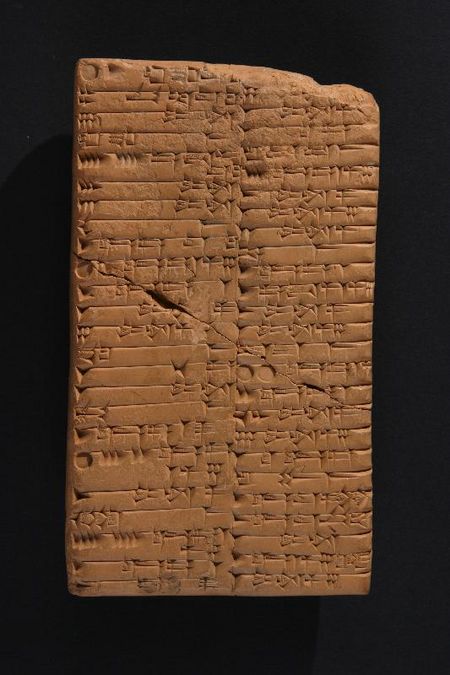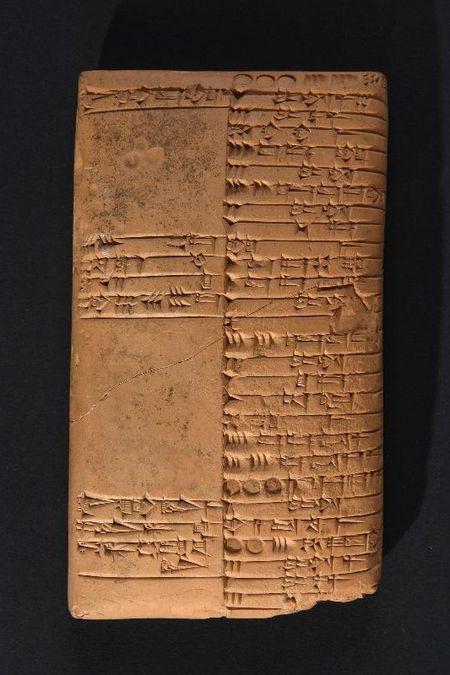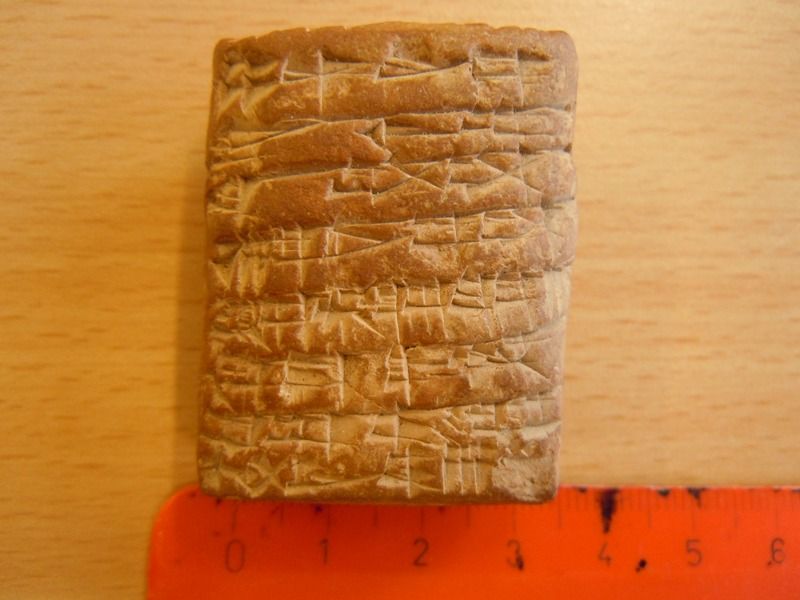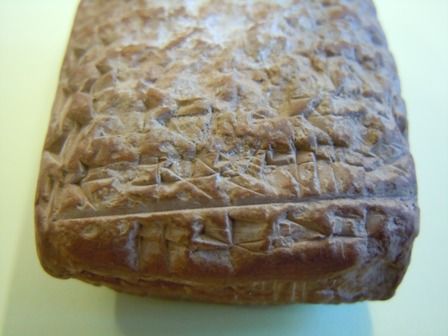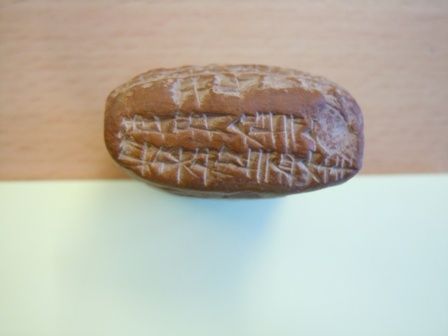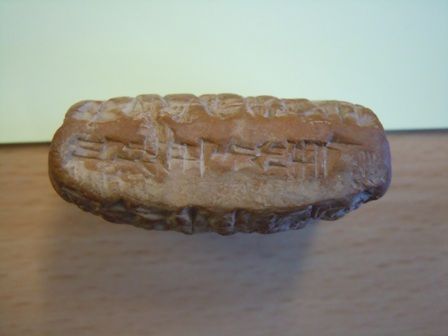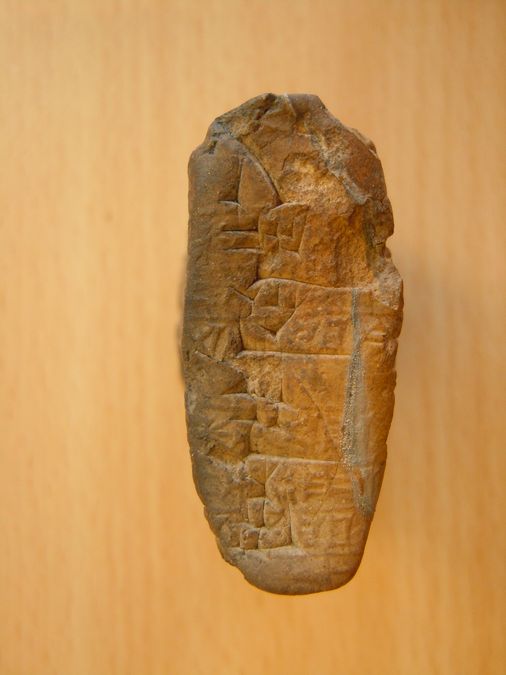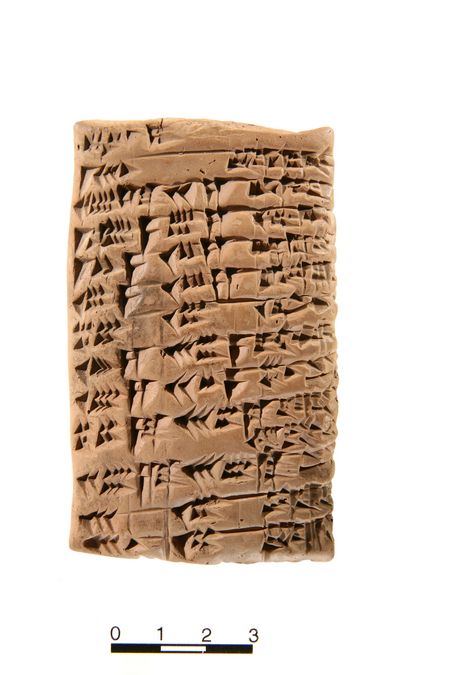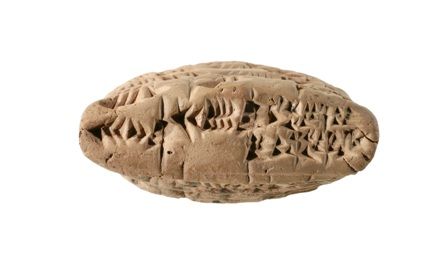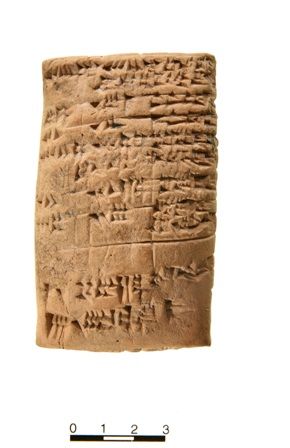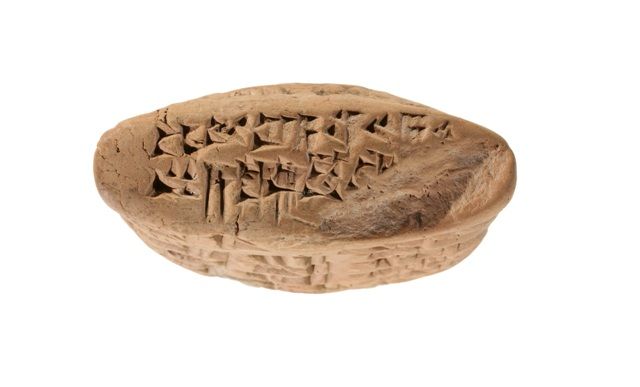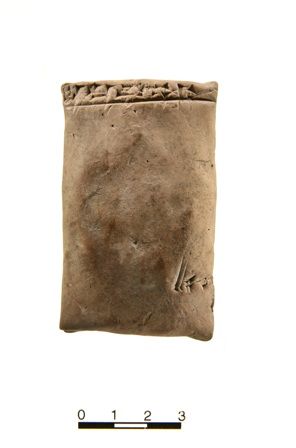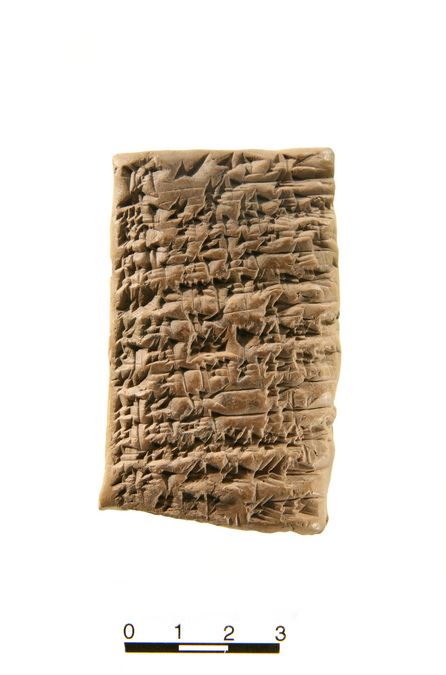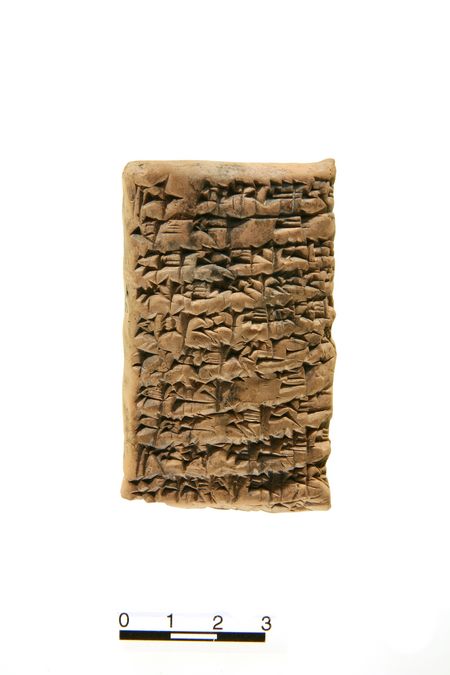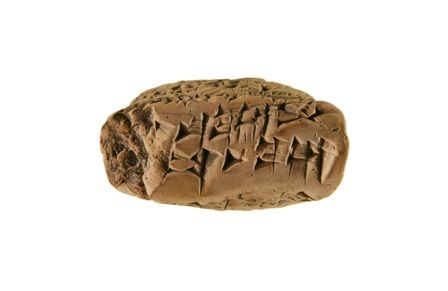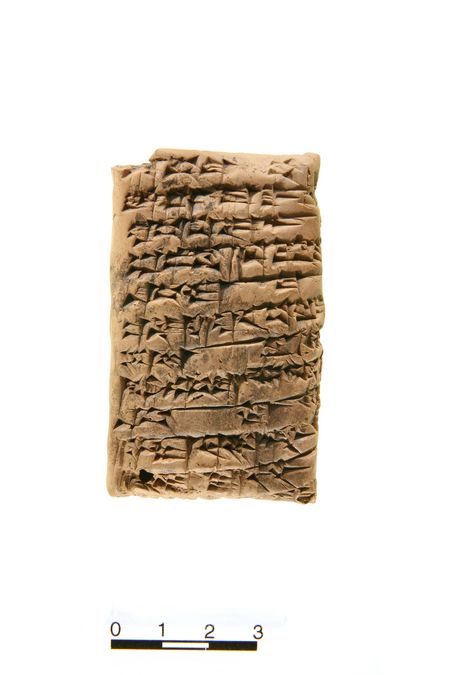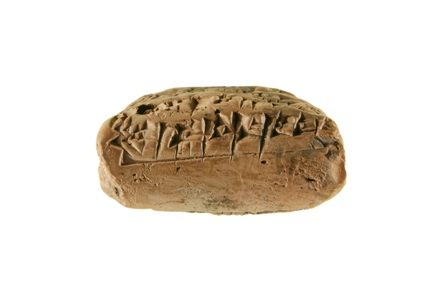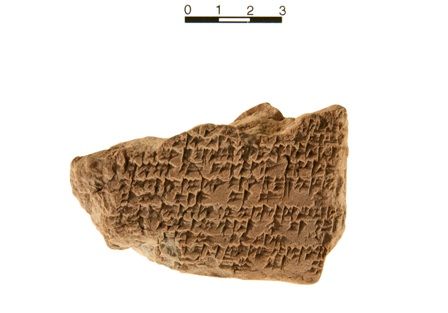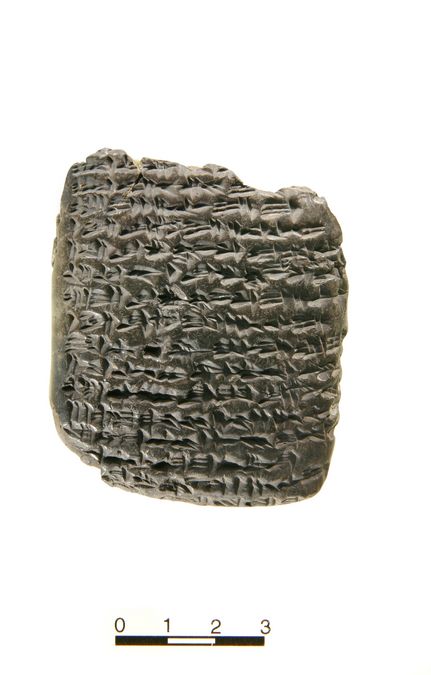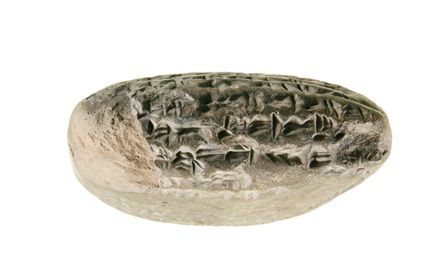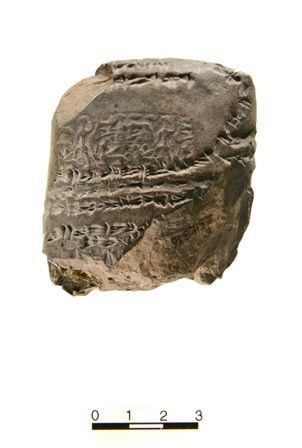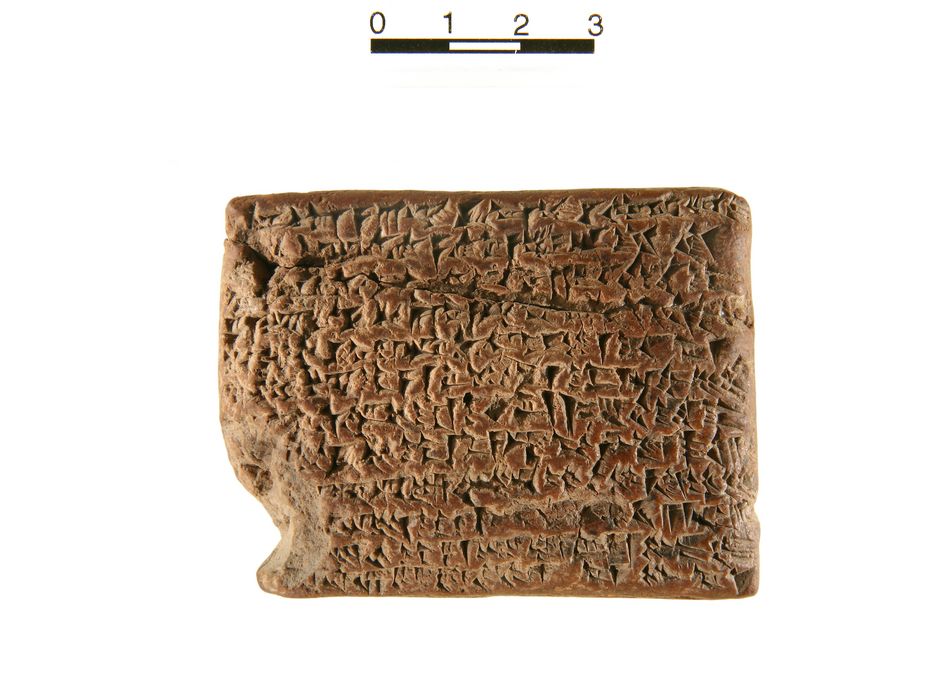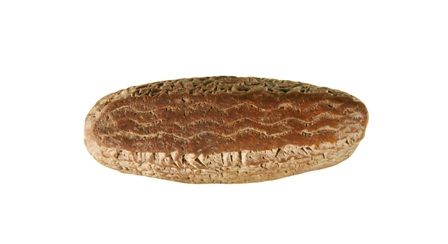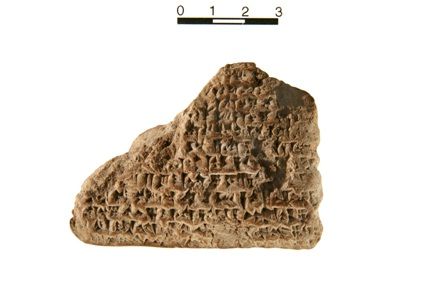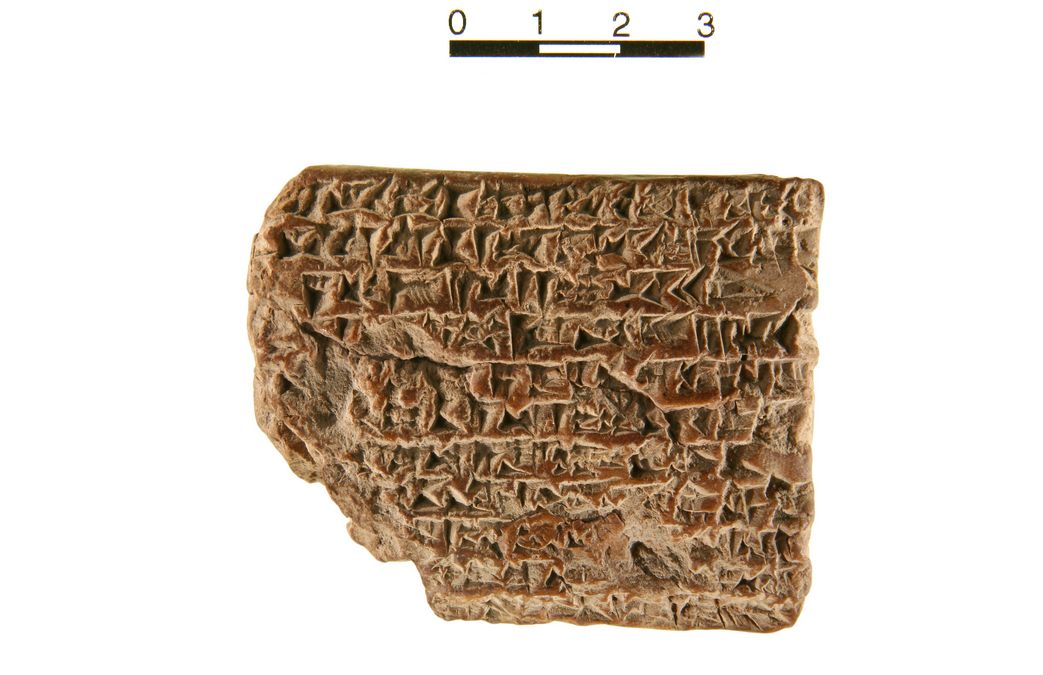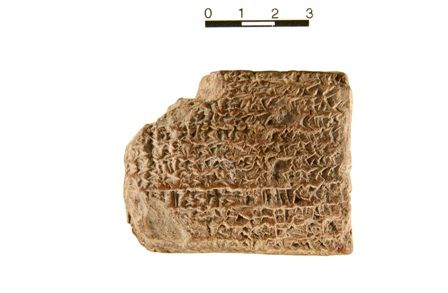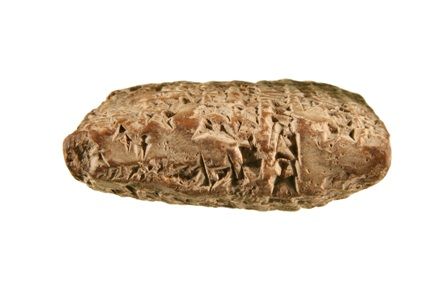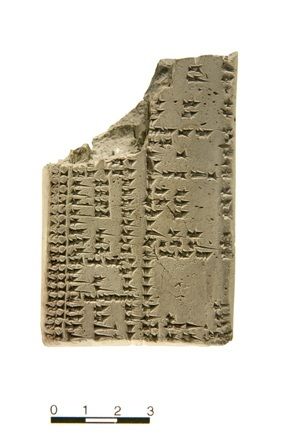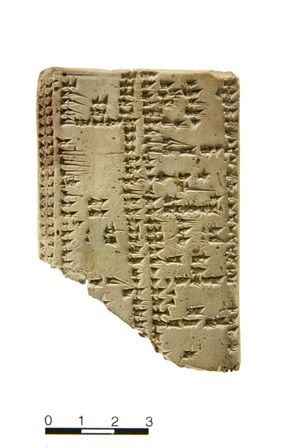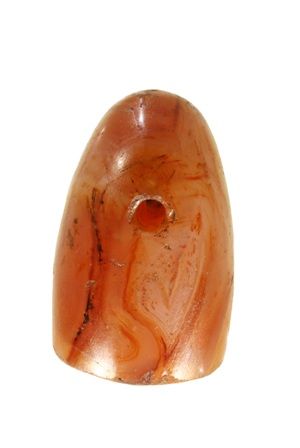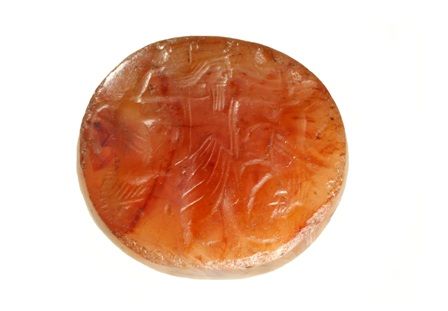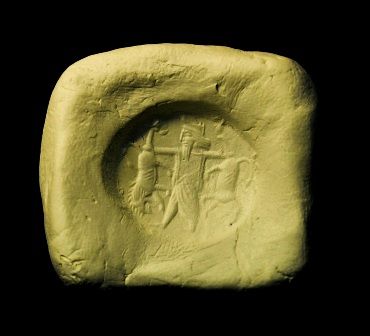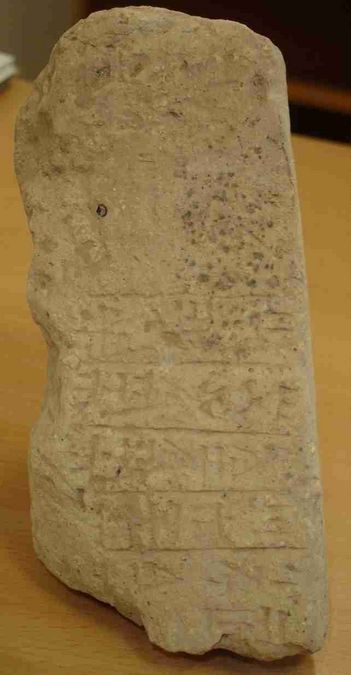The institute's tablet collection was published in 2011 in the first volume of "Leipziger Altorientalistische Studien (= LAOS)" by Hans Neumann, Carsten Tardi, Walther Sallaberger, Takayoshi Oshima, Vincent Walter, Suzanne Herbordt and Michael P. Streck. A selection of tablets is presented here with photographs.
Administrative text from the Ur III-period, likely from Umma. Date: Amar-Sin 1 (approximately 2046 BCE). The text contains an account of personnel who receive barely rations. Edition: Hans Neumann in M. P. Streck (ed.), Die Keilschrifttexte des Altorientalischen Instituts der Universität Leipzig (= LAOS 1, 2011), pp. 9–12.
Sumerian economic text from the Early Old Babylonian Period (approximately 2000–1850 BCE). Likely belonging to the archive of the temple of Enlil in Nippur. The text lists deliveries of sesame oil for festivities and ritual lamenting. Edition: Michael P. Streck in id. (ed.), Die Keilschrifttexte des Altorientalischen Instituts der Universität Leipzig (= LAOS 1, 2011), pp. 35–36.
Old Babylonian letter from Mannum-kima-iliya to Sin-ituram and Kuzallu. The text presumably originated in the Larsa region in Southern Babylonian and dates around 150 BCE. Edition: Walter Sallaberger in M. P. Streck. (ed.), Die Keilschrifttexte des Altorientalischen Instituts der Universität Leipzig (= LAOS 1, 2011), pp. 72–73.
Old Babylonian letter from Qurdisha to Belshunu, presumably originating in the are of Kish and dating to the second half of the 18th century BCE. Edition: Walter Sallaberger in M. P. Streck. (ed.), Die Keilschrifttexte des Altorientalischen Instituts der Universität Leipzig (= LAOS 1, 2011), pp. 73–75.
